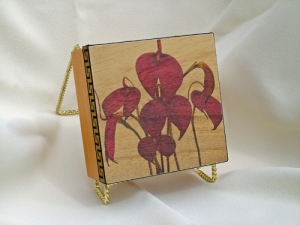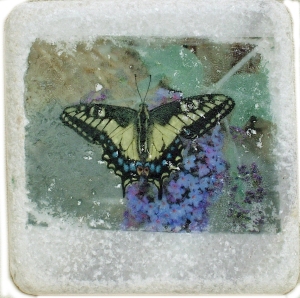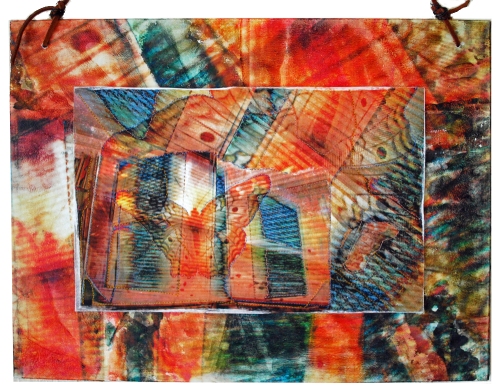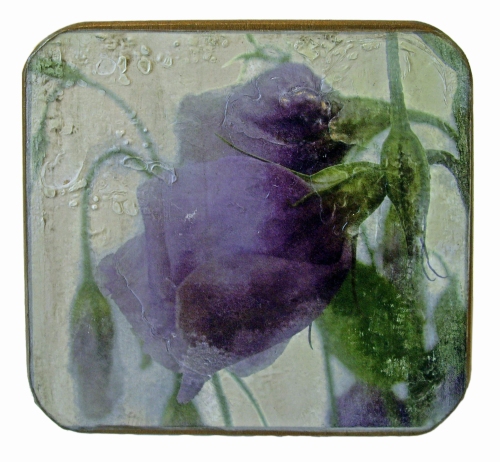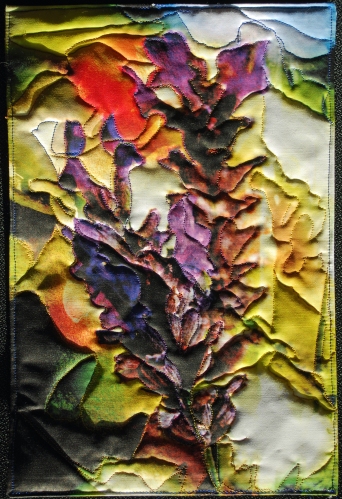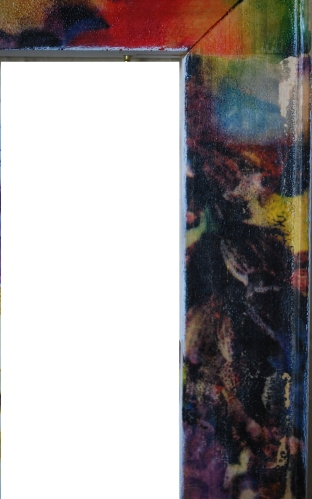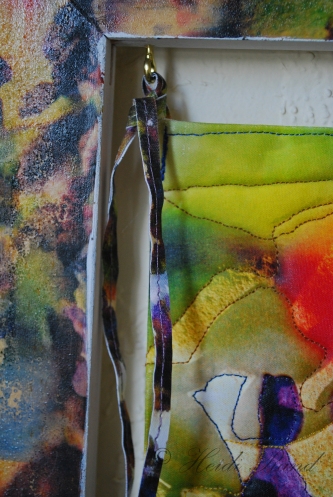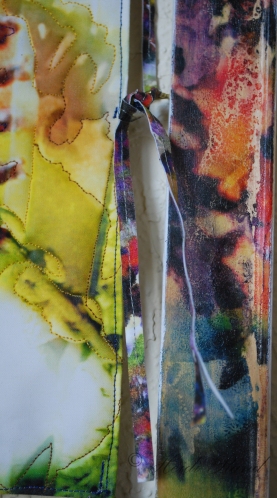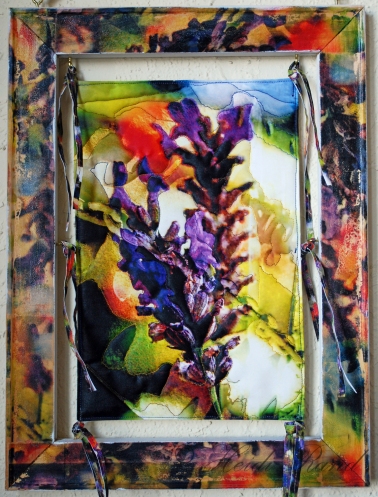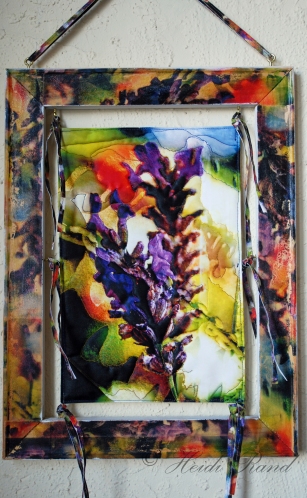Inkjet Printing on Fabric
Workshop taught by Heidi Rand
Canyon Trail Art Center, El Cerrito California
Saturday May 22, 2010 – noon to 3:30 p.m.
$35 + materials

Lavender rust quilt
Welcome to the exciting world of fabric printing! Learn to print your artwork, images and designs on fabric using your home inkjet printer. This exciting technique opens the door to endless possibilities for creating original fabric to use in quilts, art pieces, gifts, home decor, and much more.

Fabric vases
I take you step-by-step through the entire process, from preparing your files to print, to choosing the right fabric and getting it ready to go through the printer, to post-printing treatment, and much more. I will discuss the importance of knowing what kinds of inks your printer uses, and give you tips to get fabric through even the most finicky printer.

Fabric cuff bracelet
With many examples of printed fabric and fabric artwork and crafts, you’ll get new ideas about what to do with your images and designs, and the knowledge to go home and start printing your own!
Pre-registration required. Please email me at HeidiRand@gmail.com
Upcoming workshops:
Saturday June 19, 2010, noon to 4. Art quilts and fabric hangings. El Cerrito Canyon Trail Art Center
Saturday July 17, 2010 noon to 4:00 p.m. Inkjet transfer techniques. El Cerrito Canyon Trail Art Center
Sunday August 29, 2010, noon to 3:30 p.m. Photo Art : Altered Imagery. El Cerrito Canyon Trail Art Center
Sunday September 19, 2010, noon to 4 p.m. Beyond paper : inkjet printing on alternative surfaces. El Cerrito Canyon Trail Art Center
Sunday October 24, 2010, noon to 3:30 p.m. Exploring lutradur. El Cerrito Canyon Trail Art Center
Sunday November 21, 2010, noon – 3:30 p.m. Handmade gifts with your inkjet printer. El Cerrito Canyon Trail Art Center
Have questions? Interested in registering? Please email me
If you can’t make the workshop, I also have an ebook to teach you to print on fabric and online classes at CraftEdu
 I’m limiting enrollment in this workshop, and molding it to the interests of the participants. We can cover topics such as improving your nature photography, using nature in mixed media art, how to find natural subjects or attract them to your garden, and much more.
I’m limiting enrollment in this workshop, and molding it to the interests of the participants. We can cover topics such as improving your nature photography, using nature in mixed media art, how to find natural subjects or attract them to your garden, and much more.


























